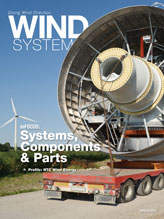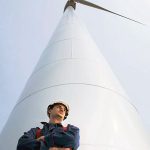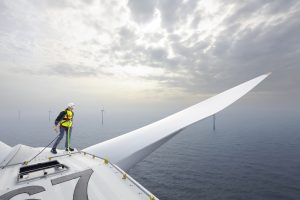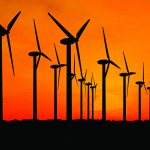As turbines come out of warranty, turbine owners absorb the costs of failed components but they also gain an opportunity to make reliability and power improvements.
Component upgrades that owners often face include bearings, lubrication, cooling and filtration, condition monitoring, power increases, and load control. A systematic view of the turbine can often benefit owners, as cumulative benefits can be linked to the whole of these upgrades. Here’s a brief overview of what to expect when upgrading some of a turbine’s more common areas:
Bearings
Bearings are a common upgrade opportunity owners often choose as their turbines come out of warranty. New designs, configurations, materials, and coatings will extend life to the system by increasing fatigue strength and durability. The choice should not be limited to the lowest cost provider. The bearings and the installation should always be an upgrade.
Downtime and lost revenue from a future repair always will cost far more than improvements made now with an experienced, competent crew. Specific to up-tower repairs, always consider replacing all bearings on a shaft rather than the broken one. Experience has shown replacing only one often leads to a re-repair in a short period of time. The small cost “saved” now can lead to significant damage and cost down the line.

Lubrication
One category under constant development is lubricating oils and greases. While polyalphaolefin (PAO) oils are predominately used as gearbox lubricating oils, each brand is designed differently, and each claim superiority. Important factors to consider are viscosity stability, resistance to foaming, corrosion resistance, and filterability. One strategy an owner might consider is to only evaluate OEM approved oils, as this approval is exceedingly difficult to obtain.
If you plan to change from one oil to another, you must budget for flushing as virtually no oils are compatible. Studies have shown cross-contamination can lead to significant problems down the road.
One counterintuitive consideration: You should not change oil based on gearbox condition. For example, AeroTorque has seen some owners change oil in a gearbox because of increasing iron counts in the oil samples or reported from on-line debris monitors. This is a gearbox problem, and while changing the oil may somewhat extend the life of the gearbox, it is financially unwise.
If the condition of the oil is otherwise within tolerance (viscosity, TAN, etc.), you will save money by filtering the oil with the use of an off-line filtration unit. Off-line filtration can often be moved from turbine to turbine. You must consider the damage in the gearbox already has occurred and will continue to produce the contaminants in the new oil.
Address the reason the gearbox is making metal as a gearbox failure, not an oil failure.
Cooling and Filtration
When installing a brand-new or rebuilt gearbox, reviewing the performance of your cooling and filtration systems is a great idea. You should never attach an old cooler to a new box. When the system starts, you will immediately age that new box prematurely, as it is subjected to everything that has been sitting in the old cooler. Money saved on keeping the old system will be quickly lost by damaging the gearbox. Filter elements and systems are similar — as replacing them during a change-out is always cheaper than after the fact — with a now worn gearbox.

Some owners choose finer filtration that typically reduces particle counts, however you must ensure against excessive pressure drop across the filter. Larger filter elements are often available with additional debris capacity to extend filter-change frequency. Off-line filtration is a more expensive upgrade but offers much finer filtration without concern of pressure drop, and in some cases the ability to remove water from the oil. As mentioned previously, these are available as permanently installed and portable units that can be moved from turbine to turbine.
Condition Monitoring
Condition monitoring has been growing in the industry, as owners have learned catching damage earlier can allow for repairs before excessive damage can occur. Additionally, a CM system can alert the owner to when he has to move to additional maintenance to deal with the increased particulates and oil conditions caused by the damage. Again, installing this while doing a major corrective is the best time to improve the overall system.
The two technologies that dominate the landscape are remote vibration analysis and remote on-line oil debris analysis. Both types of systems have their positives and negatives, and choosing the best system for your needs is often based on your team’s experience and abilities.
Which technology provides earlier detection is debatable. Remote debris monitoring is much less expensive, but it does not provide the location of the damage as vibration analysis does. Laboratory oil analysis is also popular, especially to understand the condition of the oil. Route-based vibration analysis is popular for fleets that do not have installed capabilities but lacks the continuous sampling and up-to-the-minute information.
Production Improvements
Production improvements come in two forms: incremental upgrades to existing equipment and “repowering.” This will summarize the former, as “repowering” is generally a new means to qualify for PTC under the tax code rather than an asset management tool.
In a modern repowering, an owner works with an OEM to replace all of the components of the turbine except the tower and base. When finished, the owner is now back to an OEM warranty on the major components and will not be able to improve the system until that expires. Again, this is more of a financial tool than an O&M strategy.

The first true production improvements introduced to the industry were focused on capturing additional energy either through the use of vortex generators (VGs) or light detection and ranging (LIDAR). Vortex generators are an aerodynamic improvement that uses inexpensive plastic tabs that adhere to the turbine blades. These are generally designed for a specific turbine/blade combination and may result in greater than 1 percent additional energy capture.
Some experts believe a site specific design would result in even better improvement, although at additional engineering expense. LIDAR is a technology designed to measure changes in the wind before reaching the turbine, thus allowing the turbine to react and yaw and/or pitch in anticipation of the measured change. LIDAR can be turbine specific, site specific, or something in-between.
The most prolific production improvements today are done by the turbine manufacturers themselves. These don’t normally include increasing blade diameters, but in some cases it will in order to capture lower-than-expected wind speeds. These definitely include major changes to turbine-control systems, whose codes are held in strict confidence for obvious reasons. Most systems tap into “available margins” allowing the turbine to produce at its full potential. Some extend cut-in and/or cut-out speeds; others will simply allow for more aggressive blade-pitch angles, while some include aerodynamic improvements such as VGs.
All claim to better integrate SCADA data into a more proactive information loop. Naturally the concern with any production improvement is its impact to design-life and maintenance cost versus realized revenue increases. There is always a tradeoff between loading and life, so there is a higher likelihood of more damage to components if they are now subjected to new loading outside of the original design window.

(Courtesy: AeroTorque)
Load Control
To improve the performance of the entire system, as well as these upgraded components, something must be done to limit the excessive torque loads that caused the original damage. The research and the industry are coming to a consensus that normal operating loads are not the cause of significant damage. It is the torsional loads that are transient in nature, occurring far more than expected, that are causing the majority of damage.
These loads, which can be three times the normal operating torque, occur rapidly and are not captured by SCADA systems. The graph at right shows the significant oscillations and torsional reversals that can regularly occur in your turbine’s drivetrain.
If you can reduce the transient loading in the drivetrain, all of the other O&M improvements can be more effective. As an example, if the original bearings lasted five years, improved bearings might last eight. With improved cooling, cleaner oil, and an improved additive base, they might last 10. If a load control is included that minimizes the impact of transient loads, then the system’s life will dramatically increase, lasting 12 years or even more. This strategy not only helps pay for the costs of improvements, but it also removes much of the risk.
Real-World Results
AeroTorque has seen these kinds of results first hand. When torsional load controllers were installed on new gearboxes on NEG/Micon NM-48-750, the effect was dramatic. With improved bearing and gearboxes installed at the same time as load controls, gearboxes failing in as little as three years saw little wear and no damage at all at that three-year mark. Conservatively, the owner estimated that he gained one to two years before any wear was seen. Since that time, multi-MW machines continue to see life improvements from adding torsional control to their drivetrains when they do major correctives.
Component choices are made for budgetary reasons, as well as life. However, when considering costs, a wider scope is needed: Operational costs such as downtime and other factors should be included in calculations in order to understand true costs and value.
Better component options, load control solutions, and other improvements mean owners do not have to accept higher failure rates and increased O&M costs. By making these choices earlier in a turbine’s life, you can control the second half of your turbine’s life and make it more profitable as it ages. Only through a system-based solution can you truly gain control of your future costs.

































